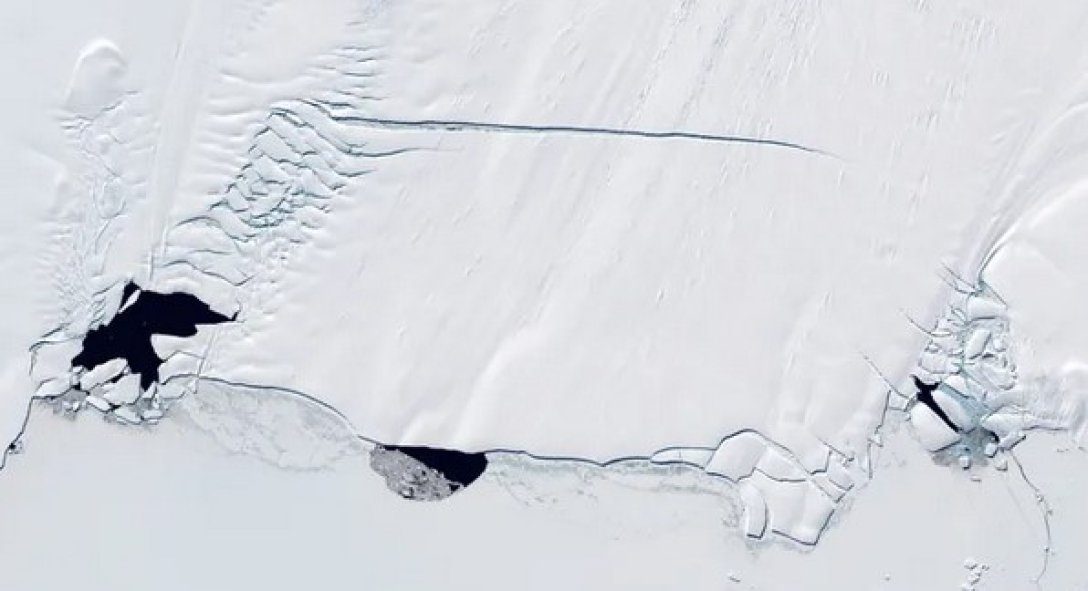
City-sized holes appear in Antarctica: what they mean
In a study published in the journal Geophysical Research Letters, scientists studied huge holes in Antarctic ice shelves called ice holes. Scientists believe that these city-sized holes may be related to the formation of giant icebergs that break away from the cold continent, Live Science reports.
Huge ice sheets cover Antarctica’s landmass and carry ice to the coast, and shelf glaciers are located above the water surrounding the cold continent. According to scientists, the main reason for the loss of ice is the chipping and melting of the lower ice layer. As the shelf ice becomes thinner, its ability to resist the flow of ice from the ice sheet decreases, which accelerates the rate of ice melt.
To better understand the causes of ice loss, scientists decided to study holes in Antarctic ice shelves called ice holes. These are large areas of water. Although the holes are associated with melting and cracking of ice sheets, there is no long-term data on when and where they appear.
The authors of the study call the holes windows into the sub-shelf environment, which can provide a clue to how ice melts deep below the Antarctic surface. The scientists used satellite data to study the ice holes on the Pine Island Glacier, which is the fastest melting glacier in Antarctica. The Nakovtsy team studied data from 22 years of observations from orbit on the change in holes in the glacier.
Many of the ice holes here are created by warm ocean water, which melts the ice from below. This melting creates warm, freshwater-rich plumes that can be released to the surface and form ice holes. Since it is difficult to go down under the ice and see what is happening there, these ice holes give an idea of the processes taking place below.
Scientists have found huge differences in the number and size of ice-holes, the total area of which can be hundreds of square kilometers. The largest single hole was recorded in 2007 and covered 269 square kilometers. It grew in just 68 days, and this happened before the 714-square-kilometer iceberg broke off. According to the scientists, it is likely that the formation of the ice holes and the iceberg breakup are related, but the exact mechanisms are unclear.
The scientists also found that the holes appeared in the same places for many years, but differed in size. It is possible that stable and ice-free areas on the glacier affect its integrity and how the shelf ice crack under the pressure of a constant flow of ice from the land.
The uneven size and lifespan of ice-free areas at the front of the glacier can contribute to glacier breakup. A large crevasse at one end provides less resistance to the flow of mainland ice compared to smaller crevasses in other areas, and this can cause the glacier to collapse as the ice sheet moves forward unevenly, scientists say.

